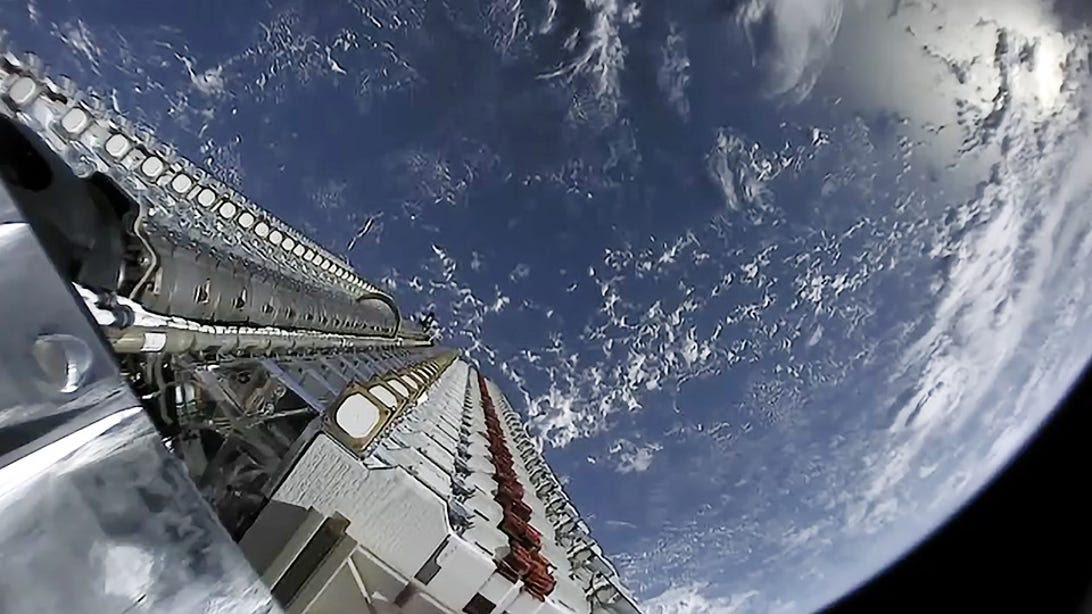An unpredictable event, On February 3, Elon Musk’s company launched 49 Starlink satellites into space via the Kennedy Space Center in Florida, USA. But a geomagnetic storm prevented about 40 of them from reaching their orbits.
“Unfortunately, the satellites deployed on Thursday were significantly impacted by a geomagnetic storm on Friday,” SpaceX said in a statement. “These storms cause the atmosphere to heat up and increase atmospheric density at our low deployment altitudes.”
This phenomenon corresponds to a reaction of Earth’s magnetosphere to the Sun’s activity. Indeed, during a solar flare, a huge gust of particles is projected against the Earth’s magnetic field, which can cause reactions at the origin of what are called magnetic storms or geomagnetic storms.
According to the press release from the space company, the speed and severity of this storm resulted in an increase in the atmospheric drag of the satellites during their ascent phase. The drag increased by nearly 50% compared to measurements observed during previous launches, preventing the satellites from reaching their final orbit, located at less than 2000 kilometers of altitude.
According to SpaceX, the forty satellites impacted will re-enter the Earth’s atmosphere, if not already the case, where they should disintegrate, “which means that no orbital debris is created and that no part of the satellite touches the ground”, assured the company. The company also said that the return of these satellites should not cause collisions with other satellites already in orbit.
If this loss for SpaceX seems important, the company is not at its first try. Nearly 2,000 of these spacecraft have already been launched by the company and it has received authorization from U.S. authorities to send up to 12,000 into space.



Comment here